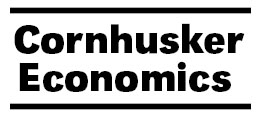Agricultural Economics, Department of

Cornhusker Economics
Date of this Version
12-14-2016
Document Type
Newsletter Issue
Citation
Cornhusker Economics December 14, 2016.
Abstract
When futures markets were created in the U.S. in the mid-1800’s, market participants were mostly farmers and grain buyers looking for a tool to reduce uncertainty in their business operations. Futures contracts can be used to establish today a price for a commodity that will be delivered in the future (hedging), hence helping reduce price risk for commodity buyers and sellers. In addition, market participants can use futures prices as a reference for what the price of the commodity is expected to be in the future, thus futures markets can also be used as a price discovery tool.
Over the years, futures markets have been through several changes, generally making them more efficient and effective for hedging and price discovery. Those changes also attracted a larger and more diverse group of participants to the market, i.e. speculators who do not have any interest in actually selling or purchasing the physical commodity. Speculators see the futures market as a piece of the broader financial market and trade futures contracts as part of their investment strategy, which includes other assets as well (such as bonds, equities, and currencies). With the continuous development of financial markets, new players with different strategies emerged and also started trading in the futures markets.


Comments
Copyright 2016 University of Nebraska.